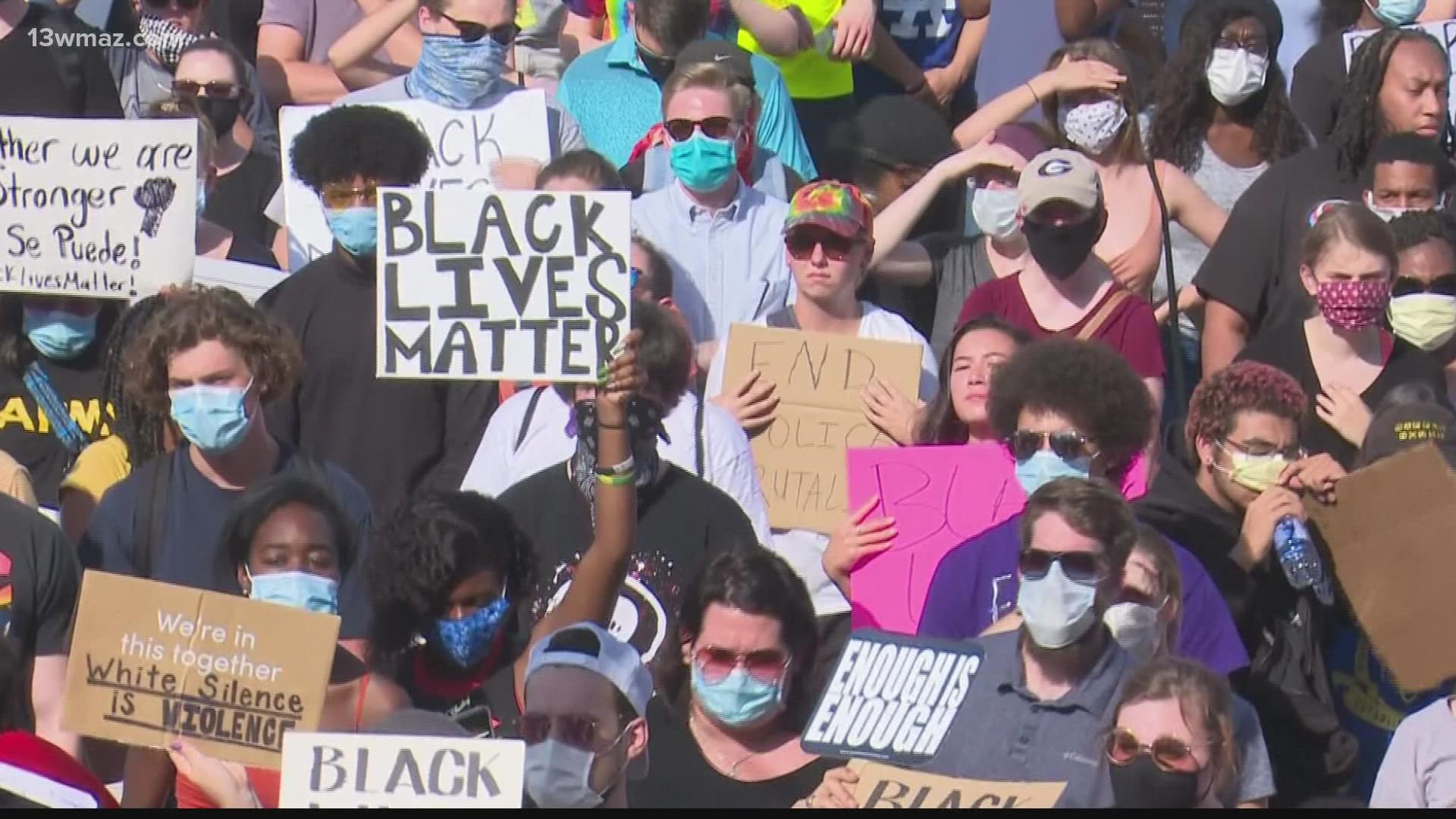MACON, Ga. — As we celebrate Black History Month, an exhibit at the Tubman Museum in downtown Macon seeks to restart the conversation about the city's racial history.
The subject of the exhibit? Artwork that emerged during Macon's 2020 march for racial justice.
People in Macon and all across the U.S. marched for change in 2020. With the deaths of Breonna Taylor, Ahmaud Arbery and George Floyd, protesters hoped to send a message.
The protests also raised questions about relocating Macon's Confederate monuments. Artists like Kevin Scene Lewis ended up building a wall around the city's two monuments to "block the hate."
"I thought it was a good contrast of the Confederate history, just to show a different side of history that is also American history," said Lewis.
Lewis painted George Stinney, a 14-year-old black boy from South Carolina who was sentenced to death for the murder of two white girls.
"His story is just sobering and sad," said Lewis.
The painted walls eventually came down, but now are back up at the museum.
"We really wanted to revisit those issues, revisit those ideas, revisit that time of change -- positive change -- this Black History Month," said Tubman curator Jefferey Bruce.
He says the exhibit is part of an effort to secure a monument for Macon's lynching victims, like the pillars at the National Lynching Memorial in Montgomery, Alabama.
"I personally want to try and do work that moves the community to have these monuments that come to Macon," Bruce said.
The Equal Justice Initiative shows at least six lynchings happened in and around Macon. Bruce says the effort to establish a monument here is being led by the Lane Center for Social and Racial Equity of Wesleyan College and requires conversation with the community, investigations into each incident, and more.
"We want to get people to the museum, see what he did, think about the things, think about the issues," Bruce said.
Issues that are sometimes uncomfortable to examine, but shouldn't be forgotten.
"Do the work necessary to get us, as community, to a place where we can say we want to remember this part of our history," said Bruce.
13WMAZ spoke with the Director of the Lane Center of Social and Racial Equity, Tonya Parker; Assistant Director, Dr. Brandi Simpson Miller; and Principal Investigator of Crafting Democratic Futures, Dr. Melanie Doherty.
All three women are leading this effort with Wesleyan. Below is our full interview with them that digs a little deeper into how the push for a monument began.

